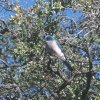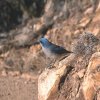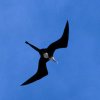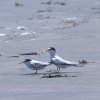I have a multitude of different creatures passing through the yard on a regular basis, especially now that I've put up several feeders and a bath. I've gotten lots of crappy cell phone pictures to date, but all of a sudden my brain turned back on and I got out the real camera and a chair, sat for a spell, and caught some of the activity.
Blue Jays




What I believe to be a Chipping Sparrow, sparrows are tricky at time to identify correctly, plus I have no idea what I'm doing, so I'm happy to be corrected.

And lastly what I have decided is a female Brown-Headed Cowbird. I'm going with the beak I.D.

.



I would still like to catch some photos of the cardinals, house finches, goldfinches, and woodpeckers. All in due time I suppose. I also just had an Oriole fly through the backyard the other day, much to my surprise. I've not seen them here before. I need to get a grape jelly feeder to lure them back.
In the meantime I should work on my reflexes, it's hard to be quick enough sometimes to catch them in time for a decent shot, especially at long zoom lengths. I've deleted a lot of photos of empty sky, empty bushes, and empty grassy spots!

I can only imagine the cost of wildlife photography back in the film age.

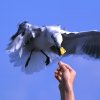


















 .
.


 I can only imagine the cost of wildlife photography back in the film age.
I can only imagine the cost of wildlife photography back in the film age. 
 . And as evidenced by the video still, they have a propensity for emptying out my feeders as well. She's just finished clearing the one in the picture. It's frustrating, because the only way to prevent it happening is to take the feeder down in the evening. But the birds have been active on it in the evenings as well, so I want to leave it up for them. It's hard to be mad though, it's wonderful to get to see things like this close up. Besides, the squirrels and chipmunks probably eat more bird seed than she does, and the deer are a lot more interesting to witness.
. And as evidenced by the video still, they have a propensity for emptying out my feeders as well. She's just finished clearing the one in the picture. It's frustrating, because the only way to prevent it happening is to take the feeder down in the evening. But the birds have been active on it in the evenings as well, so I want to leave it up for them. It's hard to be mad though, it's wonderful to get to see things like this close up. Besides, the squirrels and chipmunks probably eat more bird seed than she does, and the deer are a lot more interesting to witness.